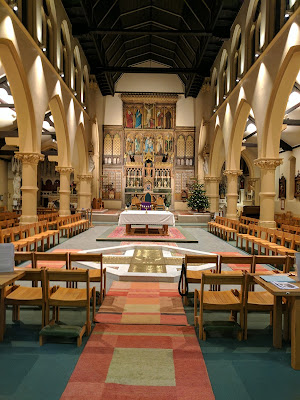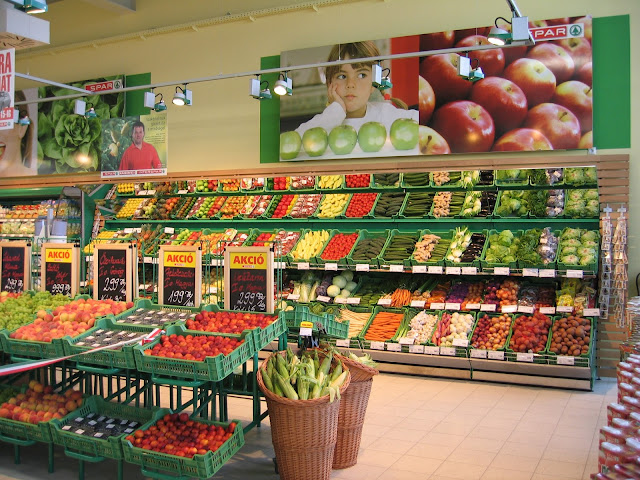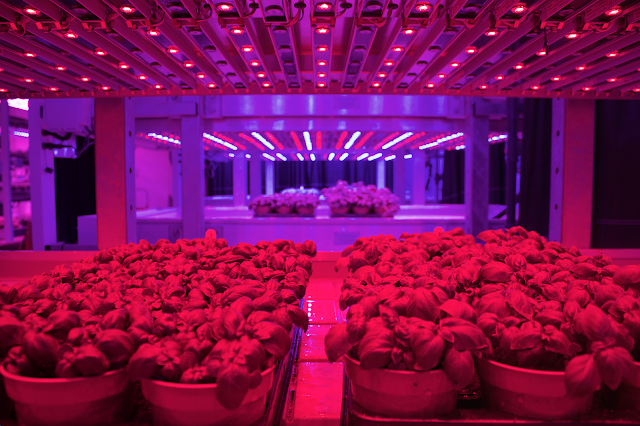Archive for March 2017
30
Case Study: Novel Energy Lighting lights up St Charles Borromeo
Comments off · Posted by admin in LED, LED Floodlights, LED Spots
Novel Energy Lighting recently worked in collaboration with the facilities team at Holy Trinity Brompton on the LED lighting retrofit project at St Charles Borromeo RC church in London.
We replaced 33 x old halogen floodlights with Design 360 Impact Surface Mounted 4000lumen LED spot lights. Lighting levels were increased and glare dramatically reduced. Gloomy corners of the church are now bright and welcoming. The project was a like for like swap, no changes to wiring were made, and all the lights were installed in 7 hours by 2 electricians.
The Church can now enjoy saving up to 90% on its lighting energy bills, and stop the maintenance call outs to change blown-out halogen bulbs high up ladders!
We have supplied LED lighting for many large churches, including St Charles Borromeo London, Holy Trinity Brompton (HTB) London, All Souls Langham Place London, St Augustines Brighton, Larkhall Baptist Church, Elim Church Dagenham, and many more.
Please call us to discuss the LED lighting needs for your church, we can provide volume pricing, lighting designs, and product expertise.
church lighting · design 360 · holy trinity brompton · htb · led church lighting · led flood · led lighting · led spotlight · Novel Energy Lighting · st charles
30
Ten retail indoor positioning projects you need to know
Comments off · Posted by admin in LED
Indoor positioning is the next revolution that is set to reshape the world of retail. Be it Osram, Philips, GE or Zumtobel all the major players in the lighting world are developing their own interior navigation systems, that utilise bluetooth chips planted in lights or visible light communication (VLC) to send directional information to shoppers smart phones. The apps can then direct shoppers to special offers or products that particularly interest the shopper in question.
New indoor positioning projects in retail are now popping up around the globe and the initial results from these are often quite impressive. Here are Lux’s top ten indoor positioning projects that you need to know about.
10) Ginza Six Mall – Tokyo
StepInside, an indoor positioning system developed by Senion is being installed, which will show patrons the quickest route to a store via a smartphone app.
The mall is expecting up to 20 million people to visit the store every year, many of whom will be tourists unfamiliar with the sites layout.
The building’s management will use the data collected by the app to better understand the behaviour of visitors, helping authorities to develop better traffic flow management systems when the store opens.
9) CapitaLand Mall – Singapore
 The CapitalLand Mall in Singapore is installing a Philips VLC based indoor positioning system.
The CapitalLand Mall in Singapore is installing a Philips VLC based indoor positioning system.
Users are required to install an app on their smartphone and then allow the camera on their phone to pick up a light frequency emanating from the Philips lights installed around the mall.
The shopper’s location in the mall is then identified and directions are given, depending on where abouts in the estate the shopper wants to go. Retailers are also able to use the app to send out targeted marketing messages to shoppers.
8)E.Leclerc – Langon
 Zumtobel joined forces with E.Leclerc Langon, a hypermarket in France, to launch an indoor positioning, smart parking and mobile push marketing app.
Zumtobel joined forces with E.Leclerc Langon, a hypermarket in France, to launch an indoor positioning, smart parking and mobile push marketing app.
The existing lighting infrastructure has been adapted to offer the serrvices, by fitting the luminaries with sensors.
The Bluetooth beacons allows customer to locate their position and allows E.Leclerc Langon to send real-time push messages with customised offers, based on the customers current location in the store.
In the car park, the app can help a customer to locate available parking spots, or even find their way back to their car when they have finished shopping.
7) Tai Po Mega Mall – Hong Kong
 Google has invested in several indoor location companies and the firm believes that that in time indoor positioning will be bigger than GPS, simply because people spend the great majority of their time indoors.
Google has invested in several indoor location companies and the firm believes that that in time indoor positioning will be bigger than GPS, simply because people spend the great majority of their time indoors.
Google has created indoor maps of stores like the Tai Po Mega Mall in Hong Kong and other major worldwide retail destinations in preparation for the launch of the company’s head-mounted computer ‘Glass’ which will allow people to see directional arrows through glasses.
Although it is still early days, there is the potential for Bluetooth chips embedded in light fittings to be able to provide information to feed Google Glass in the future.
6) Carrefour – Lille
Carrefour in Lille steer shoppers straight to discounts via the lights in the shop ceiling.
The €84 billion ($93.4 billion) retailer transmits digital information from LED lamps to customers’ smartphones via VLC provided by Philips. The system uses 800 programmable Philips LEDs.
VLC is able to encodes lightwaves with data about products and promotions, and transmits the information straight to the camera on a shoppers’ smartphone.
An app then displays the directional information, which helps to guide the consumer to the product’s location in the sprawling store.
5) Walmart – US-wide
Walmart is thought to be trialling Acuity Brands indoor positioning technology.
Acuity Brands claims that it has now deployed lighting-based indoor positioning systems (IPS) in swathes of retail space across the US.
Acuity Brands is thought to be developing indoor positioning products in conjunction with Microsoft.
The two companies are developing products that utilise lighting to communicating information to to shoppers smartphones.
Data the app collects is then sent to Microsoft’s Azure cloud system to allowing retailers to discern useful retail patterns and insights.
4) Aswaaq – Dubai
UAE supermarket chain Aswaaq became the first retailer in the Middle East to install connected lighting which communicates with its customers.
Its Dubai branch boasts a VLC based indoor positioning system, which allows shoppers to find items in the store to an accuracy of 30cm.
Smart-phone owners must first download the Aswaaq-branded app, which allows their phone to communicate with the individual light points transmitting their location through the high-frequency modulation of the light.
The data stream is one-way and no personal data is collected by the lighting system.
3) Target – US wide
 American retail giant Target uses LED ceiling lights to track in-shop customers and guide them to relevant products via their smartphones.
American retail giant Target uses LED ceiling lights to track in-shop customers and guide them to relevant products via their smartphones.
The system is widespread and has been placed in nearly 100 Target stores.
The $73 billion chain told Lux that the scheme uses wireless signals that travel between LED lights and shoppers’ Android gadgets to spread directions and information related to products and special offers.
The 100 location deployment marks the largest known deployment of indoor positioning by any retailer to date and offers a good sign that the system can work and be worthwhile on a wide scale.
2) EDEKA Paschmann – Düsseldorf
An EDEKA Paschmann supermarket in Düsseldorf became the first store in Germany to benefit from the new Philips’ indoor positioning system earlier in the year.
In collaboration with Favendo, Philips has developed a new smartphone app that gives shoppers access to location-based services, helping them to find items in the store, down to an accuracy of 30cm.
A range of newly introduced downlights and spotlights have been installed in the store, which are compatible with the Philips way-finding technology.
As well as providing location services and in-pocket notifications about discounts, the technology can also be used to collect data about where are the busiest areas in stores and analyse the routes customers take to find products. This allows retailers to make better decisions when it comes to store layout and marketing.
The Philips Lighting Bluetooth low energy (BLE) beacons, which allow the location system to work, are easy to integrate as they come with multiple powering options ranging from full integration into luminaires to track-mounted beacons.
1) Marc O’Polo – Switzerland-wide
 The indoor positioning system installed as part of a trial in Marc O’Polo stores in Switzerland saw the average value of purchases made by customers rise by 10 per cent, the best evidence to date that indoor positioning could well revolutionise retail.
The indoor positioning system installed as part of a trial in Marc O’Polo stores in Switzerland saw the average value of purchases made by customers rise by 10 per cent, the best evidence to date that indoor positioning could well revolutionise retail.
Osram Einstone technology was commissioned by the Bollag-Guggenheim Fashion Group to try and improve customer loyalty, whilst increasing the chances that customers would purchase products. The company wanted to develop a mobile phone app that would serve as a digital customer loyalty card, which would offer discounts and special offers locally using indoor positioning technology powered by the lights.
shuttla
indoor positioning systems · led lighting · led supermarket lighting · lifi · Novel Energy Lighting · retail lighting · visible light communication · vlc
23
Are pastel coloured uplights the key to retail success?
Comments off · Posted by admin in LED, LED downlights, Philips LED
The use of pastel coloured uplights in retail displays has been found to increase sales in a new study. The installation of the lights in a particular area of a store in Germany were found to increase basket values by six percent.
The same combination of coloured lights also increased customer visits to the revamped section of the store by 15 per cent when compared to an area lit with standard store lighting.
Philips Lighting produced the study in conjunction with major German grocer, Globus, with the expressed aim of finding lighting that increased sales.
‘As a retailer, to stay ahead of the competition, you have to create a multi-sensory environment and a ‘wow-factor’ in your stores,’ commented Norbert Scheller, store manager at the Globus supermarket in Saarbrücken where the experiment took place.
The researchers spent two months testing different lighting conditions in the supermarket. Three settings were tested, including the store’s uniform overhead lighting, regular spotlights and a combination of spotlights with pastel coloured uplights.
Retailers have traditionally lit stores using uniform, white, overhead lighting. The research showed that the 58 spotlights used in the experiment strengthened the appearance of products by increasing contrast.
Adding coloured uplighting, aimed at the ceiling, also helped to differentiate the promotional zone, making it more visible.
globus · LED downlights · led retail · led supermarket · led uplights · Novel Energy Lighting · philips led · retail lighting · shop lighting · supermarket lighting
23
LEDs are set to change horticulture by increasing yields
Comments off · Posted by admin in LED, Philips LED
Not only this, but growing fruits and vegetables under LED light makes them less vulnerable to the threats of climate change. It is no wonder then, that interest in the role LEDs can play in farming is growing.
Lux spoke to Doctor Phillip Davis, business manager at Stockbridge Technology Centre in Yorkshire, who will speak at our Horticultural Lighting Conference, to find out what more can be done to speed up the LED revolution in farming.
The Stockbridge Technology Centre was originally a UK Government research facility set up after the Second World War to improve food production methods.
The site has survived through many changes, but it is now an independent industry owned site and registered charity, which delivers innovative R&D services to all sectors of the horticulture and agri-food industry.
Today, as the world population continues to grow, there is a real fear that we will run out of food. The role of the Stockbridge Centre in the twenty-first century is to bring forward technology that can improve food production sustainably to tackle the challenges of today.
‘LED lighting was technology that we recognised five of six years ago as being something that could really benefit horticulture,’ Doctor Phillip Davis, told Lux.

One of the greenhouses at the Stockbridge Technology Centre where tomatoes are grown beneath coloured LEDs. The glasshouse contains two types of Philips LEDs. Top lights are located above the crop, which are used to replace the standard high pressure sodium lamps and LED interlights are located within the canopy to maximise crop light use efficiency.
‘There is a huge amount of interest across the horticultural industry in LEDs. This is not just because of energy efficiency, but because of the potential light has to manipulate plants.’
The ability to change the colour of LED light is crucial. 90 per cent of plant genes are regulated by light. So, by changing the light spectrum, it is possible to change how a plant grows, how fast it develops and its morphology. It is also possible to change the flavour, the aroma, the antioxidant content and, potentially, the amount of vitamins produced by a plant.
STC uses a plant’s natural biology to do this and does not not alter or play with their genetic make up in any way. Instead, it uses light to improve the yields, quality, as well as the taste of the product being cultivated.
Light can be used to ensure that the taste of fruit and vegetables is consistent throughout the year, for example, ensuring there are no differences in taste between a strawberry grown in season and one grown in winter.
‘We spoke to a restaurant chef recently who said that it is quite difficult to design a recipe if the flavour of basil changes throughout the year,’ Davis said.
‘The systems that we are talking about are never going to replace field crops. What we are going to do instead is add another layer of crop production into the current system, which is robust enough to survive climate change and adds security to the food chain.’
‘We can produce the same quality basil all year round, meaning that every time you make a recipe you will need the same amount of basil every time.’
If the light environment is right, it is also possible to improve the rooting of plants when vegetative cuttings are taken. The right lighting can improve the strike rate of cuttings (i.e the number of plants taking root) from 20 per cent to nearly 100 per cent, meaning savings on labour and materials can be made.
More than a thousand commercial growers have visited Stockbridge to see the technology, but the use of LED on farms is still not particularly widespread.
‘The main delay in application is convincing growers that LED is an economically sensible move,’ Davis said.
‘This is because LED is more expensive that the lighting technology that is currently used on farms. When the price starts to drop there will be a lot of growers looking to invest in the technology.’
One of the main reasons for this is the fact that LEDs are constantly advancing at such a speed that prices of lighting units are remaining similar to what they were two years ago. Installation costs are falling, but the price of LED does still not appeal to many growers.

LED spectra can be adjusted to control many aspects of plant quality including appearance, height and flowering time.
The advantages of LED are considerable, as well as altering the light spectrum, the low temperature of LED means that they can be placed near to the plants without damaging them. There are also no heavy metals or glass in LEDs, whereas sodium lights do sometimes break leading to contamination.
But the main advantage of LED farming is that it is impregnable to global warming, which means plants can be cultivated without interruption, no matter what the weather.
‘The systems that we are talking about are never going to replace field crops,’ Davis says. ‘What we are going to do is add another layer of crop production into the current system, that is robust enough to survive climate change and adds security to the food chain. These systems will produce the same quality of crops all the time, without being dependent on weather.’
Since joining Stockbridge from academia, nearly half a decade ago, Davis has been really surprised by the interest that both the farming and the lighting industry has shown in his work.
He has been particularly impressed by the farming industry’s desire to bring academic science into practice, however he has been unsettled by the barriers that are in place to prevent this progress.
‘We need lower costs for LED farming to take off,’ Davis concluded. ‘But not at the expense of quality. Prices are coming down, but we need to be in a position where people look at the technology and say yes, this makes obvious economic sense.’
crop growing · greenhouse lighting · horticultural lighting · led for plants · led lighting · Novel Energy Lighting
Euroshop took place in Dusseldorf, Germany, last week. The event is the biggest retail themed trade show in the world and this year there were plenty of lighting developments to get excited about. From indoor positioning to interactive flooring, we have the low-down fresh from the Messe. Lux Review 14 March 2017.
gooee · indoor location tracking · indoor positioning system · interactive flooring · led retail · li-fi · Novel Energy Lighting · retail lighting
15
Are your stairs safely illuminated or are you risking court?
Comments off · Posted by admin in LED
In the UK, the Health and Safety Executive’s Guide HSG38 ‘Lighting at Work’, published in 1997, gives minimum recommended illumination levels that meet health and safety requirements. Inside this document, it states that these recommendations should provide the minimum light levels necessary for the health and safety of employees. They apply to interior and exterior lighting intended for everyday use.
The average illuminance required in HSG38 is 20 lux and the minimum measured illuminance required is five lux. It has a footnote that states that only safety has been considered because no perception of detail is needed and visual fatigue is unlikely. Where there are other considerations, which might need to be taken in to account, the HSG recommends referring to the CIBSE/SLL Code for Lighting.
The levels recommended in the Code for Lighting are based on the European Standard EN12464-1, 2011 which is published in the UK as BS EN 12464-1. For indoor stairs, escalators and travellators, the recommendation is for an average illuminance of 100 lux. It also requires that there is ‘enhanced contrast on the steps’.
The main reason for the difference between these values and those of the HSG document is that EN 12464 concerns performing the given visual task efficiently and accurately, rather than the minimum required for safety. Here, the task is walking up and down a staircase.
One omission is that the recommendations are an average over an undefined area; although one would reasonably assume that it would be the horizontal illumination on the stair treads including the most important top and bottom ones.
Exceptions
There is an important exception to these requirements and this applies to dim environments where the standard 100 lux level may be distracting or cause problems with visual adaption. As well as night clubs and bars, hospitals often have dim lighting at night to allow for the observation of patients. Museums and art galleries sometimes have sensitive objects illuminated to only 50 lux and their surroundings are much darker.
The general principle in dim environments is that the top and bottom step of any flight of stairs are illuminated more brightly than their immediate surroundings. They should also have a contrasting nosing on each step.
To give a perceptual difference, the first step should be lit to a lighting level one ‘standard lighting interval’ above ambient. These lighting intervals are in the Code for Lighting and taken from EN 12665. The lower levels are 20 – 30 – 50 – 75 – 100 – 200 lux. As an example, if the average illuminance on the floor is 20 lux, the first step should be 30 lux.
The Society of Light and Lighting will shortly be issuing a guidance document on the specific issue of lighting for stairs.
Visit our LED Bulkhead section to view the available lighting solutions for stairwells and other communal areas.
communal lighting · HSG38 · led 2d · led bulkheads · led lighting · Lighting at Work · Novel Energy Lighting · stairwell lighting
From the Super Bowl, to the football pitch, to the speedway, lighting is being used to improve the sporting experience. This week we ask how is lighting changing the way we watch sports?
arena lighting · led flood lights · led floodlights · led lighting · led sports · Novel Energy Lighting · pitch lighting · sports lighting
13
80% of UK school kids ‘at flicker risk’ from old lights
Comments off · Posted by admin in LED, LED panels
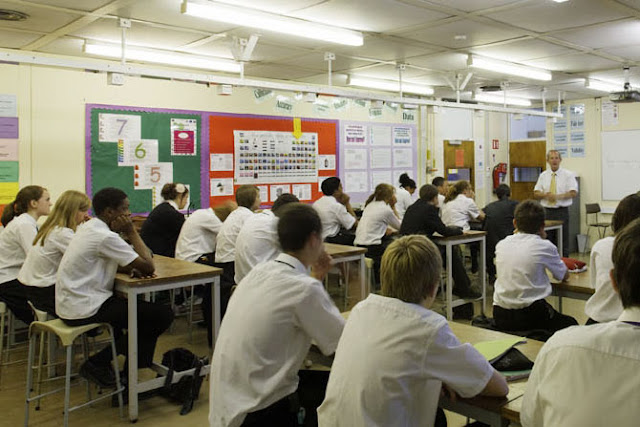
Professor Wilkins says it’s ‘plain enough’ that bad flicker from magnetic ballasts in schools can impair learning. A switch to high frequency gear, or LED luminaires, would fix the problem.
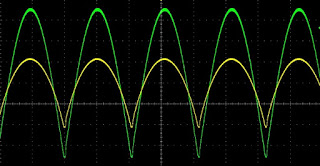
Because of the way magnetic ballasts manipulate the 50 Hz sinusoidal waveform of the input voltage, they deliver a light output that flickers at 100 Hz. This frequency is in the danger zone of harmful flicker, which could impair learning.
‘Unfortunately 80 per cent of our schools are still lit with lighting that flickers at 100 hertz’, he told a Lux conference on lighting fixture design in London this month. ‘It causes headaches and its causes anxiety. It’s there all the time. Whether it impairs their learning, seems to me to be plain enough.’
Although people can only directly perceive fluctuations at frequencies up to about 70 Hz, human vision is adversely affected by light fluctuations up to 200 Hz. Visual performance is especially degraded by flicker in the 100 Hz to 200 Hz range and in general, younger people are likely to perceive lower level and higher frequency flicker than older observers.

Professor Arnold Wilkins says that 100 Hz is present all the time under magnetic ballasted fluorescent fittings in schools. ‘Whether it impairs their learning, seems to me to be plain enough’ he told the Lighting Fixture Design Conference in London.
‘100 hertz should be avoided.’ The solution is to upgrade to high frequency control gear for fluorescent or LED. ‘It’s a simple as that.’
Flicker at 100 Hz is prevalent in older fluorescent light fittings with magnetic ballasts which were popularly installed in schools before the introduction of high-frequency electronic control gear and LED panels. Typically, magnetically ballasted fluorescent luminaires will exhibit flicker of between 10 and 20 per cent of output, and a ‘compact flicker degree’, or CFD, of over 20 per cent. Prolonged exposure leads to eyestrain, headaches and anxiety.
Professor Wilkins has a number of high profile awards to his name, including the Leon Gaster Memorial Award, the Walsh Weston Memorial Award and the Owen Aves Medal and has been made a honorary fellow of the College of Optometry.
LED Ceiling panels are available from Novel Energy Lighting. We stock multiple quality brands, such as Thorn, Ansell, Philips, and MEGE:
flicker free · led 600x600 · LED Ceiling Panels · led flcker · led panels · low flicker · Novel Energy Lighting · school lighting
13
Ansell LED Infinite Ceiling Panel, 600mm x 600mm, 40W, IP44, 7yrs
Comments off · Posted by admin in LED, LED panels
We’ve got a special deal going on the extremely high quality Ansell LED Infinite Ceiling Panel:
ANSELL AIRMLED/CW: Ansell Infinite LED Recessed Panel Cool White 40W LED 600 x 600 – Tridonic Driver with loop-in, loop-out wiring, IP44-rated, 7YR warranty.
Special offer price, AS LOW AS £34.99ea +VAT !
Ansell are a leading manufacturer of quality internal and external lighting solutions for commercial, industrial and retail applications. They include the very latest in energy saving and efficient LED luminaires.
Ansell Infinite is a high performance LED flat panel available in cool white (4750K). There is a range of accessories available including Ansell’s new emergency POD which will enable users to convert any Ansell Infinite panel in to an emergency fitting.
Key Benefits:
– High performance LED flat panel which outperforms Moduni 3x14W T5
– Low glare and even light distribution ensures suitability for most applications
– Tridonic Driver with Loop-in, Loop out Wiring Facility
– Maintenance free instant light output and unlimited switching
– 40,000 hours average lifetime
– Non-dimmable
– Supplied with integral driver
– IP44 Rated
– 7 Year Manufacturers Warranty
– Colour / Finish: Silver Grey
Applications: Widely used in hotels, meeting rooms, offices, hospitals, schools, factories, commercial lighting, shopping malls, supermarkets, and so on.
595x595 · 600x600 · AIRMLED/CW · ansell · ansell infinite led · LED Ceiling Panel · led panel · Novel Energy Lighting
There is new evidence that indoor positioning systems when installed in retail spaces can increase profit margins. This week Lux Today asks the question what is indoor positioning and how can the lighting industry make the most of this golden opportunity?
indoor location tracking · indoor positioning systems · led retail lighting · li-fi · Novel Energy Lighting · retail lighting

